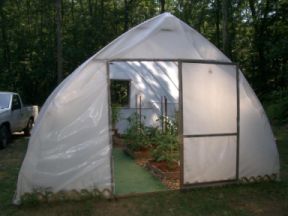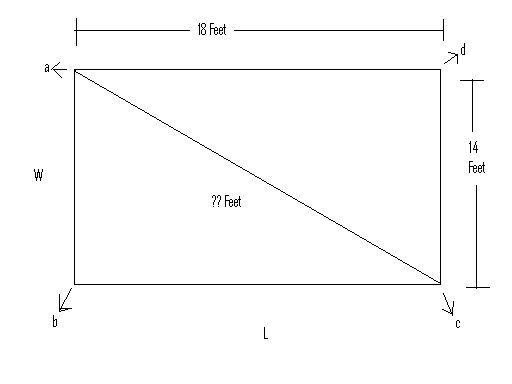A hydroponics system can be set up indoors or out. If you are growing outside you may want to consider greenhouse hydroponics system – in other words, build a greenhouse for yourself. Keep in mind that an outdoor hydroponics system needs to be under cover or rain will dilute the nutrient solution and it will change the PH rather quickly.

Furthermore, a greenhouse provides warmth, humidity and animal protection in a controlled environment making a greenhouse hydroponics system one of the best ways to set up an outdoor hydroponics system.
My portable greenhouse hydroponics system, measures 14 x 18 feet and has a ceiling of 12 to 14 feet. It is constructed out of 1 inch PVC piping and is covered with 8-mil plastic. It has survived a surprise 3-inch snowstorm, 60 mile per hour winds and many rainstorms.
Each year I assemble it in early spring and take it down in fall. It cost less than $400 to build and is almost completely reusable – each year all I replace is the plastic covering. For the covering I purchased a 100-foot by 20-foot roll of 8-mil plastic used as a painter’s drop cloth.
This is why I only built it to be 18 feet long. I can cut a long solid piece of plastic for covering the greenhouse and at a 20-foot width it just fits over the greenhouse (18-feet) hanging down 1 foot on each end so you can staple it down. It is a little ‘rough around the edges’ but it does the job quite nicely.
Selecting the Site
To build this you first need to select and prepare the site. Greenhouse plans for a portable greenhouse are easy to follow and provide an ideal solution for an outdoor hydroponics growing system. Your greenhouse site should provide easy access, receive at least 4 to 6 hours of sun daily and be reasonably close to an electrical outlet. Since the greenhouse plans call for a greenhouse that is 18 feet by 14 feet, site selection may be limited so do the best that you can.
Once a site is selected, you need to mark out the 4 corners of the structure by pounding sticks or small posts into the ground that mark the end of the structure (points ‘a’ and ‘b’ in the picture). These should be 14-feet apart.

Now we need to determine where to place corners ‘c’ and ‘d’. Remember the Pythagorean Theorem in grade school? If you don’t, do not worry I’ll explain its practical use in a minute. We need this formula to determine where to put the remaining 2 corners in such a way that the site is completely ‘square’.
It is worth taking the time to do this because a ‘squared’ structure will be able to take more added stress before collapsing than an ‘unsquared’ structure. A squared structure will also accommodate the construction process much easier making the greenhouse plans ‘flow’ rather than frustrating you.
The Pythagorean theorem says that in a triangle with a 90-degree angle between the base and the side, the length of the hypotenuse can be determined with: Base (squared) + Side (squared) = Hypotenuse (squared). In English this means the base is 18 feet so (18 x 18 = 324); the side is 14 feet so (14 x 14 = 196). (324 + 196 = 520). So, the length of the greenhouse from point ‘a’ to point ‘c’ is the square root of 520 which is about 22.8 feet or 22 feet 9.5 inches.
To place corner ‘c’, we tie a string to corner ‘a’ and mark on it 22 feet 9.5 inches from corner ‘a’. We also tie a string to corner ‘b’ and mark the 18-foot point along its length. Take both strings in hand and move around until the mark on each string meets and that is where corner ‘c’ is placed. Do the same to find corner ‘d’ using the 18-foot string tied to corner ‘c’ and the 22-foot 9.5 inch string to corner ‘b’.
Assemble your Tools and Materials
Now that you have the site designed it is time to assemble your tools and materials. The entire structure is built of PVC, plastic, plastic zip ties, 1 x 2-inch pine boards, a little deer netting and some screws and hinges. I found the actual construction plans for this greenhouse online. You can find several free PVC greenhouse plans here. I was able to construct it and I have limited mechanical ability at best, so, if I can do it so can you. Once the greenhouse has been assembled and the hydroponics system is running there is not much left to do other than the general hydroponics maintenance.
Larry Maki is an avid, self-taught hydroponics gardener with a passion for alternative types of gardening.
Related Articles & Free Email Newsletter Sign Up
Container Hydroponic Systems are Great for Beginners
Passive Hydroponics for the Home Hobby Grower



Comment here